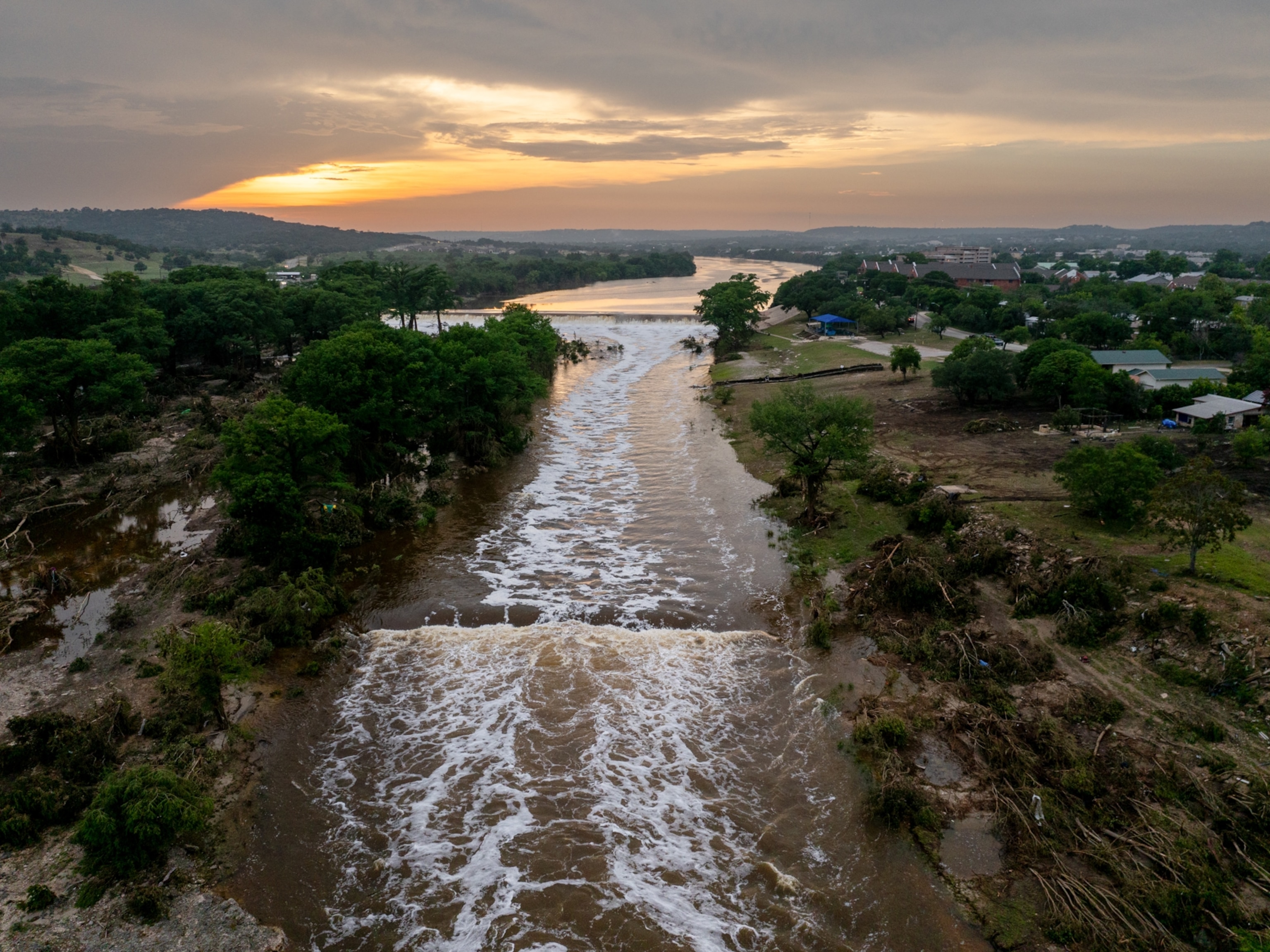
As the climate crisis worsens, cities turn to parks
Cities across the U.S. are seeing worse floods and hotter summers, but experts believe urban parks can help residents cope.
City parks have long been a place for urban residents surrounded by the gray of asphalt and concrete to get a small dose of green. As cities increasingly feel the impacts of rising seas and temperatures, city planners are rethinking the roles of urban parks.
“There’s been a quiet and profound move to use parks to help cities adapt to the realities of climate change,” says Diane Regas, CEO of The Trust for Public Land, an organization that works to create neighborhood and national parks.
Each year the trust publishes their ParkScore Index, which ranks the top 100 largest U.S. cities by parks. The 2019 rankings will be released on Wednesday; Minneapolis won the highest ranking in 2018. The trust looks at size, convenience, amenities, and financial investment to compile its list.
While amenities like basketball hoops and playgrounds have long been assets that bumped cities into top spots, increasingly, Regas says, the trust is seeing cities build parks that can alleviate climate change effects like intense heat, flooding, and poor air quality.
And it's more than shade trees that are helping fight climate change. The trust says parks can help mitigate coastal flooding, capture carbon, and foster a sense of community among those that will be affected by extreme weather.
Cooling down islands of heat
All of the dark-gray asphalt in cities collect heat—a lot of it. A 2018 study by the National Oceanic and Atmospheric Administration mapped the hottest areas of Washington, D.C. and found that intense heat nearly always aligned with the densest urban areas. Large parks cooled certain parts of the city by as much as 17 degrees Fahrenheit. That kind of cooling can be a lifesaver given the more than 600 annual deaths caused by heat-related illnesses.
Dallas is one of the country's fastest-warming cities thanks in part to its sprawling, impervious surfaces, but with a new $312 million bond package, the city is hoping to change that.
“A lot of people see Texas as very conservative but there's no denying that climate change is real, and our cities understand that,” says Dallas Park and Recreation President Robert Abtahi. “Our parks are taking on that big challenge in the ways we can the best.”
Using satellite data, the city is able to see what neighborhoods most need the cooling effect of green spaces. Parks like the planned Dallas Water Gardens will be situated in some of the most heat-stressed parts of the city.
Mopping up floods
Cities are increasingly being inundated with floodwaters, and city planners think parks can help with this issue too.
A report published in February by The Nature Conservancy looked at the best ways to mitigate flooding in Houston, a city with many neighborhoods built on floodplains and regularly inundated by rising waters. Offering affected homeowners buyouts and converting homes into green spaces would save more money than installing infrastructure like pipes, they found.
The coastal city has projects under way to create more than 150 miles of trails, parks, and green spaces along the many bayous running through its urban landscape.
While Houston received a wakeup call from Hurricane Harvey in 2017, it was Hurricane Sandy's 2012 strike along the Northeast coast that forced cities to reconcile their new realities.
New York City is building a patchwork of waterfront parks designed to absorb the energy of incoming water and to drain deluges of rainwater. Atlanta, after repeatedly being hit by flash floods, is creating a 16-acre park designed to absorb millions of gallons of water.
In Boston, Parks and Recreation Commissioner Christopher Cook says the city is preparing to see 40 inches of sea level rise by 2050.
“Parks are playing an outsized role in the adaptation plan,” he says, but emphasizes that the city doesn't see urban parks as a solution to stop or reverse climate change. For that, he touts instead Boston's plan to become carbon neutral over the next 30 years.
One piece of the puzzle
Brendan Shane, the climate program director at the Trust for Public Land, says parks can ultimately provide a sort of social resilience, in addition to cooling neighborhoods and absorbing floodwater.
“The stronger the bonds are from neighbor to neighbor, the better they are able to react to a shock,” he says. “The nice thing about parks is they give you all those things at the same time.”
While drainage pipes and reservoirs have also been used to curb some of the impacts of rising seas, the trust and city planners see parks as a way to adapt while providing a better quality of life. It's not only about making green space, they say, but also about creating opportunities for people to exercise and play.
“Not a single sollution by itself will avoid the climate crisis. We see parks as an important part of it, but there isn't a silver bullet,” says Regas.
She adds: “Parks are an example of what we in the environmental [advocacy] community need to do to embrace solutions that simultaneously address climate change and make people’s lives better.”





